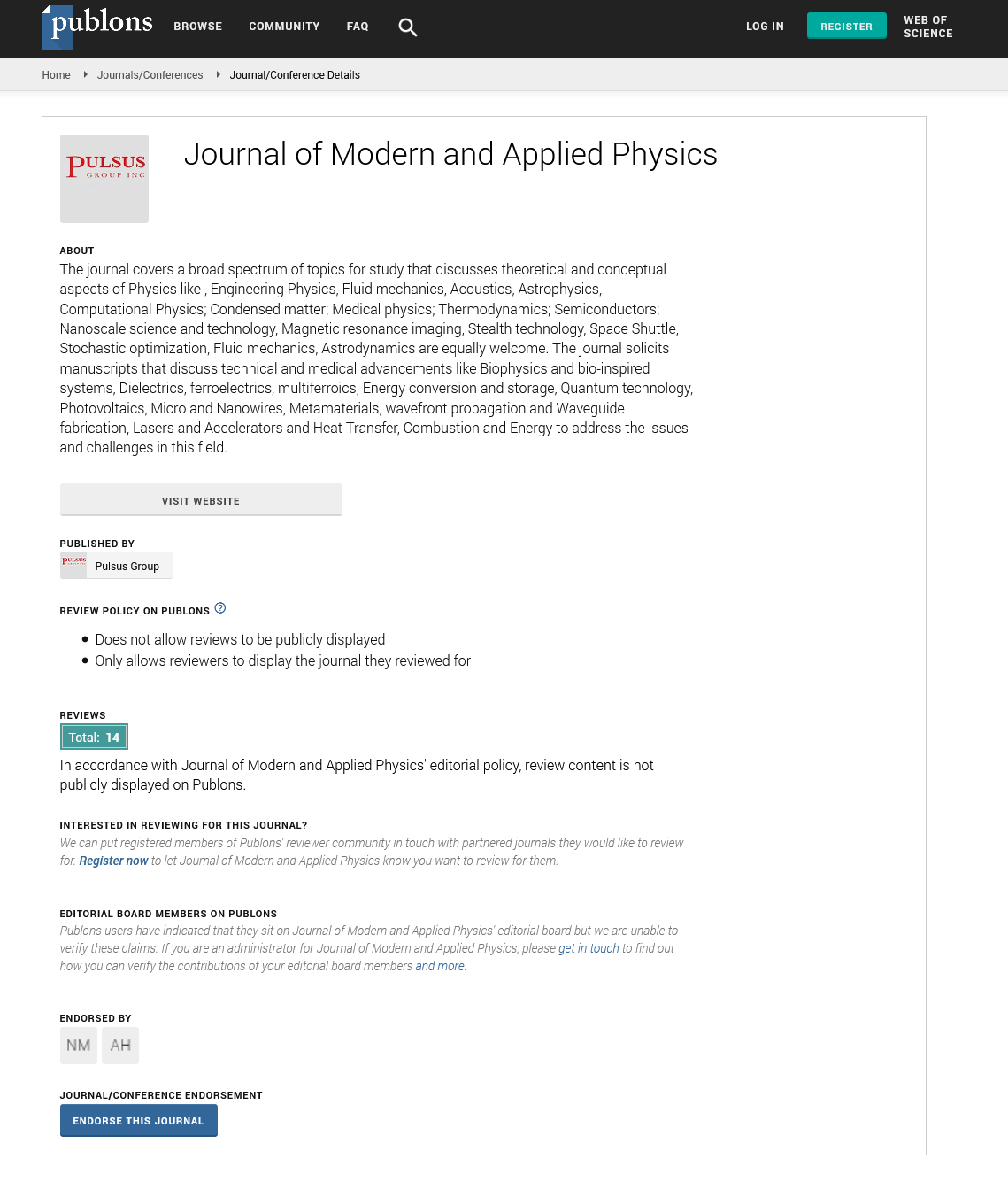Antimatter and relativity
Received: 12-Oct-2023, Manuscript No. puljmap-23-6806; Editor assigned: 14-Oct-2023, Pre QC No. puljmap-23-6806(PQ); Accepted Date: Oct 25, 2023; Reviewed: 18-Oct-2023 QC No. puljmap-23-6806(Q); Revised: 21-Oct-2023, Manuscript No. puljmap-23-6806(R); Published: 28-Oct-2023
Citation: Blaber R M., Antimatter and Relativity. J Mod Appl Phys. 2023; 6(4):1-2.
This open-access article is distributed under the terms of the Creative Commons Attribution Non-Commercial License (CC BY-NC) (http://creativecommons.org/licenses/by-nc/4.0/), which permits reuse, distribution and reproduction of the article, provided that the original work is properly cited and the reuse is restricted to noncommercial purposes. For commercial reuse, contact reprints@pulsus.com
Abstract
Recent research, published in Nature (Anderson et al, 2023) shows that antimatter, in the form of antihydrogen, falls freely in the presence of a gravitational field. This ought to come as no surprise to any physicist, as it follows, logically, from the Special Theory of Relativity, which proposes that mass and energy are equivalent, and the General Theory of Relativity, which proposes that mass energy produces gravitational fields, and is affected by them. As antimatter possesses both mass and energy, if the experiment conducted by Anderson and his colleagues had shown any other reaction to the one it did, they would have disproved both of Einstein’s theories. ‘Exotic matter’, rather than antimatter, is the kind that can be expected to evoke an ‘anti-gravity’ effect.
Key Words
Antimatter; Gravitational fields; Special and General Theories of Relativity; Mass; Energy; Exotic matter; Anti-gravity.
Introduction
Recent research, published in Nature on the 27th September(Anderson et al, 2023), demonstrated that antimatter, in the form of antihydrogen (atoms consisting of positrons orbiting antiprotons), was attracted by a gravitational field, that of the Earth, falling towards it in laboratory conditions [1].
This ought to have come as no surprise to them, or anyone else, for Einstein (1905) had predicted that mass and energy are equivalent, and Einstein (1914; 1915) demonstrated that mass-energy, of necessity, both produced and reacted positively to, gravitational fields, which are curved space-time [2-4].
Antimatter, like matter, has mass and energy – indeed, in most cases (with obvious exceptions, such as antineutrons and antineutrinos) antimatter particles are only differentiated from their matter counterparts by their opposite electric charge (Quinn, 2003) [5].
Exotic matter, on the other hand, otherwise known as ‘negative’ or ‘phantom’ matter, unlike antimatter, possesses negative energy (Forward, 1990), and can be expected, if it exists, to react negatively to the presence of any gravitational field, which would repel rather than attract it [6].
See Morris and Thorne (1988); Gibbons (2003, 2018); and Kim (2009) [7-9].
Conflict of Interest
The author declares he has no conflict(s) of interest, and that he has received no funding for his research from any source(s), public, private or voluntary sector.
References
- Anderson EK, Baker CJ, Bertsche W, et al. Observation of the effect of gravity on the motion of antimatter. Nature. 2023; 621(7980):716-22.
- Einstein A. Does the inertia of a body depend upon its energy-content. Annalen der physik. 1905; 18(13):639-641.
- Einstein A. The formal foundation of the general theory of relativity. Sitzungsber. Preuss. Akad. Wiss. Berlin. 1914:1030-85.
- Einstein A. The field equations of gravity. Proc. R. Prussian Acad. Sci. 1915:844-47.
- Quinn HR. The asymmetry between matter and antimatter. Phy. T. 2003; 56(2):30-35.
- Forward RL. Negative matter propulsion. J. Propuls. Power. 1990; 6(1):28-37.
- Morris MS, Thorne KS. Wormholes in spacetime and their use for interstellar travel: A tool for teaching general relativity. Am. J. Phys.1988; 56(5):395-412.
- Gibbons GW. Phantom matter and the cosmological constant. arXiv. 2003.
- Kim SW. The physical properties of exotic matter. J. Korean Phys. Soc.2009; 54(6):2196.





